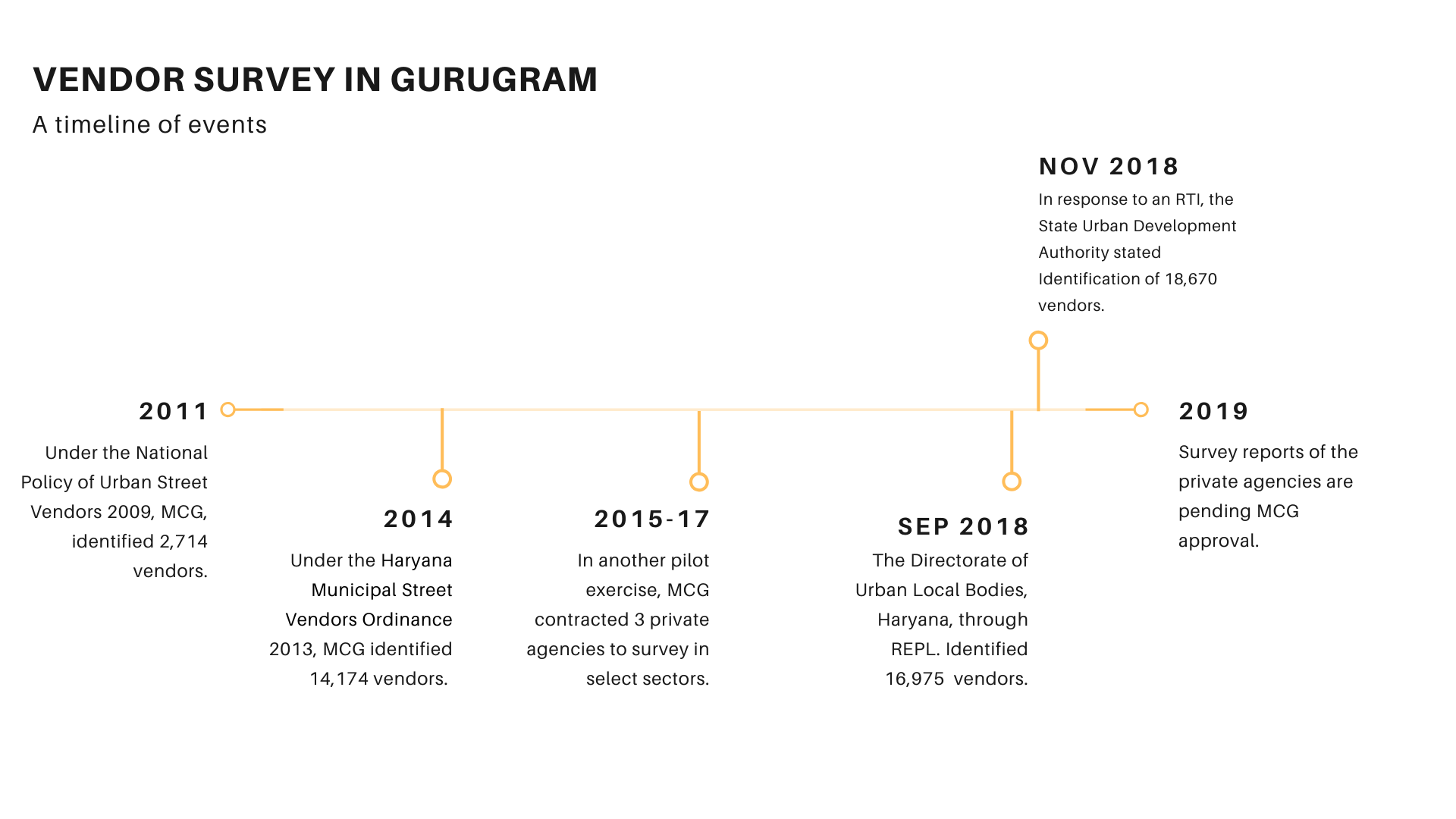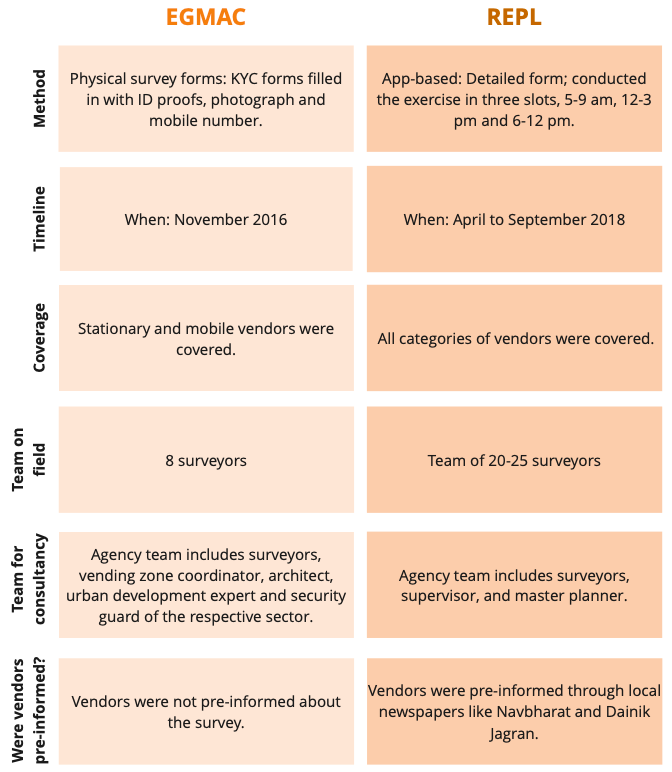The Street Vendors Act 2014 mandates the formation of town vending committees (TVC) to survey all local street vendors at least once every five years. Until a survey is complete, no street vendor is to be evicted. In this attached study, we document how street vendors were enumerated in Gurugram, Haryana.
Multiple surveys, varying methods
In the span of seven years, six private agencies have been contracted by different government departments at the municipal and state level. These agencies carried out surveys using varying methods and each reported different number and category of vendors (Figure 1). Despite multiple attempts, it is not clear if and how the agencies adhered to the Central Act and state guidelines. There also seems to be a lack of thorough and careful evaluation, by the local authority, of the work carried out by the private agencies.

Enlarge this image
Figure 1: Timeline of surveys in Gurugram
Contracted agencies used different survey practices
To understand the enumeration mechanisms adopted by different agencies, we interviewed two agencies, Egmac Capital and REPL. The former was contracted under the local authority and surveyed sector 10A and 56, the latter was contracted by the state government and surveyed the whole of Gurugram.
While Egmac Capital carried out a survey using physical forms, REPL used an app called the REPL Survey. The application allowed the agency to geotag the individual vending spot of all vendors. Figure 2 lists the differences in practices followed by the two agencies.

Enlarge this image
Figure 2: Comparative analysis of survey practices adopted by two agencies
Critical gaps in vendor enumeration practices in Gurugram
Surveys are not all-inclusive: Barely a third of the vendors we interviewed (11 out of 30) were surveyed under any of the survey exercises. Even in designated vending zones, vendors remain uncounted. None of these vendors could confidently declare who their surveyor was.
Local authority reigns supreme: The Act is clear on two aspects: first, the final decision on vending zones will be made by the local authority in consultation with the TVCs, and two, the scheme has to provide for the conditions and principles of demarcating vending and no-vending zones. Haryana fails on both aspects: the local authority decides and then declares its decision to the TVC, and there is no notified scheme.
Misaligned Incentives: The TVC meeting minutes, from 25 January 2017, highlight that one of the agencies underreported the number of vendors to evade paying the Municipal Corporation of Gurugram (MCG) its share in the fees collected from vendors. In another instance, the state government paid REPL on a per vendor basis. While the first instance creates incentives for the agency to underreport, a per-vendor payment system may create perverse incentives to overreport the number of vendors.
Survey complete without a scheme. What next?
There remain many implementation gaps. Haryana, for example, has not drafted the scheme, as required under the Street Vendors Act 2014. The state government and the MCG carried our surveys, through private agencies, in the absence of a scheme. Further, the scope and results of the agencies differed significantly making comparisons or creation of a unified dataset of vendors difficult.
The survey reports of all the agencies are stuck with the local authority and TVC. Complaints to the MCG by the vendors and the private agencies go unheard. Currently, the only avenue to express concerns, the TVC, has not conducted any meeting since 21 August 2018.
Gurugram’s model of contracting out vendor enumeration to private agencies may be desirable given constraints on state capacity. However, without clear objectives and rigorous evaluation of work, we are left with less than perfect outcomes.

